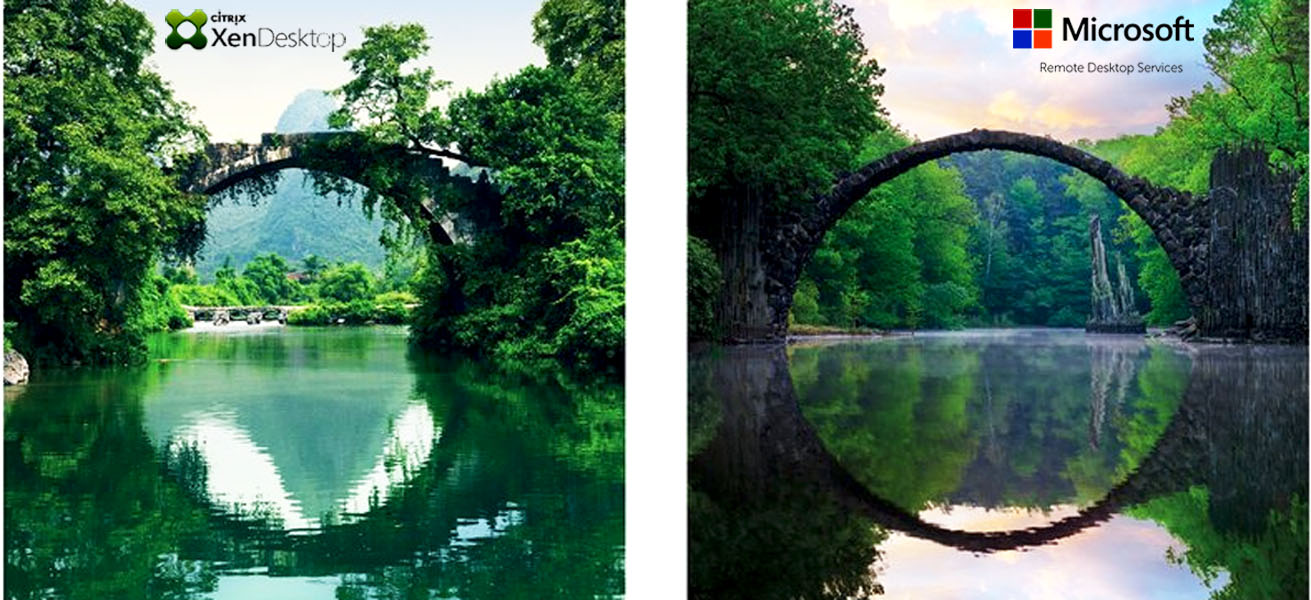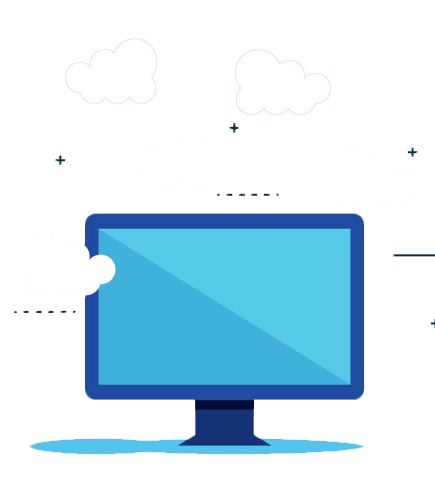
RDS vs Citrix XenDesktop: 5 things to consider
With businesses increasingly seeking virtualization, many get confused with the array of virtualization choices available. Today we will discuss, and also compare, the two popular desktop virtualization solutions – the familiar old boy the Remote Desktop Services (RDS) and comparatively new entrant, the Citrix XenDesktop. This will help you to understand which one would be the best fit for your work.
But first, let’s get a glimpse of the two.
RDS
RDS, developed by Microsoft (originally known as Terminal Services) is a virtualization service. Here your entire desktop running RDS, along with the Windows software can be accessed by any remote client-machine supporting the Remote Desktop Protocol (RDP). The remote users thus get a secure, mobile and remote access to desktops and applications.
Citrix XenDesktop (XD)
Citrix Virtual Desktop is a multi-session virtualization software developed by Citrix. It may be considered as the latest successor of desktop virtualization that centralizes desktop management in a data center, and allows a user to run virtual desktops from anywhere with advanced data security.
Both have many similarities at the core, yet lots of feature-divergences make them different altogether. While choosing one over the other, this is where discretion is required, based on the output requirement.
Let’s approach their features head-on.
RDS vs XenDesktop Comparison
- Performance
Remote Desktop Protocol (RDP) is the core of any virtualization.
While Microsoft uses RDP, Citrix uses HDX and the major difference starts from here.
With RDS, every user interacts directly with RDP on the server. Could be a single server or a cluster at a time, but this means every user shares a fixed amount of resources (RAM, CPU). Naturally, the scalability issue arises-more the users online, slower the user experience.
Citrix XenDesktop uses High Definition Experience (HDX) protocol built on Citrix ICA (Independent Computing Architecture) to give high-performance user experience along with superb scalability, faster deliverance (even of the most demanding applications), anywhere accessibility.
The HDX protocol works on principles like active compression, redirection and faster rendering by acting as a buffer between the servers and the users. The user gets seamless experience irrespective of device or bandwidth.
- Scalability
As seen already, RDS doesn’t scale well. Meaning, new users will not be able to log in if the server reaches its capacity. The worst scenario, some of the existing users could be logged out without any prior warning.
Same is not the case with Citrix. Here, with increased users, all you need is to request for more resources without any spooling up, configuring or patching a new server.
- Usability
With RDS you will often need to use some third-party generic applications to access it on some devices say tablets or mobiles. You may have to close some Windows-features to get RDS work. Not a very exciting experience; this makes RDS a better choice for app virtualization instead of a full-desktop virtualization.
RDS is based on server operating system (OS) and low data transfer makes it more suitable for application virtualization for remote workers with minimum internet speed (works even with low strength mobile data connections).
As against, the HDX protocol that Citrix uses works on 3-levels of user experience:
a) Device level where users can work on any device and pause/stop any virtual desktop/app and restart from a different device exactly from the left-off point.
b) Network level ensuring best performance over any network, low bandwidth and high-latency WAN environments.
c) Datacenter level using the processing power and scalability of servers to give high outputs.
- Reliability
RDS needs an uninterrupted internet connection. If you have fluctuating internet, your session will disconnect without giving any warning or chance to save your work.
The Session Reliability feature of Citrix XenDesktop gives continuous output even under patchy internet situations without any fear of losing work.
- Cost
This is the situation where Citrix XenDesktop pricing may lose out against RDS.
With all its standout features, Citrix Xendesktop cost is more. Because, it’s basically a desktop virtualization solution in a true sense, giving you far better user-experience and greater control.
At the same time, though RDS has lower upfront expenses, it has hidden costs due to its increased downtime and loss of productivity.
Now the question, which one would be your best bet?
In case if you are not looking for a complete desktop virtualization solution, don’t need heavy applications to run like graphics-intensive designing or CAD, have limited users to access with decent internet connectivity, you can get away with RDS. Otherwise, XenDesktop is an unmatched solution for you.
Having said everything, here are a few last sentences.
XenDesktop though comes with more possibilities and promises, its correct installation could be painfully difficult and complex to troubleshoot, should anything go wrong.
With App4Rent hosted Citrix VDI however, you can have all your requirements met, minus the pains. Besides, the no-contract, pay-as-you-use model, along with no minimum-user limitation and flexible scalability will be very cost-effective for you.
With more than 18 years of virtualization experience having served over 10,000 business in 90 countries worldwide, the tech-experts of Apps4Rent would be happy to guide you to the right kind of desktop solution as per your requirement. Contact the 24/7 available sales team to discuss your requirements.



